
| The Greek islands | Antikythira HOME | Kythira |





|
| The island of Antikythira or Antkythera in Greece |
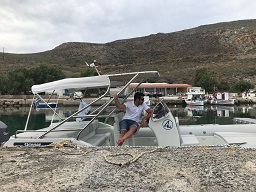 |
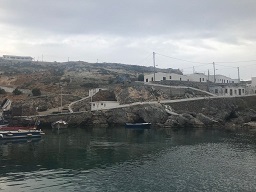 |
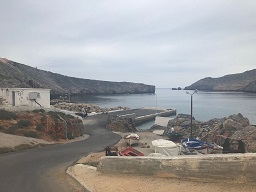 |
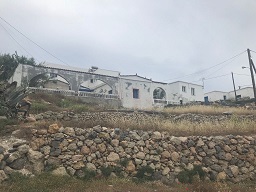 |
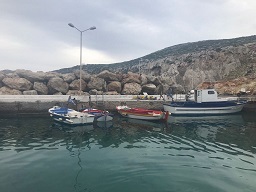 |
 |
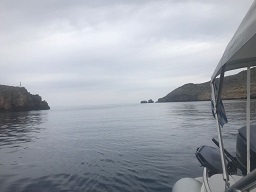 |
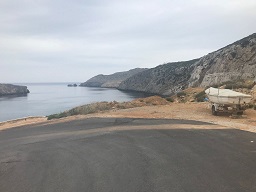 |
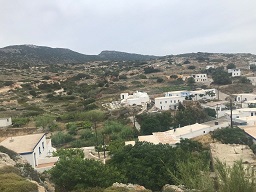 |
 |
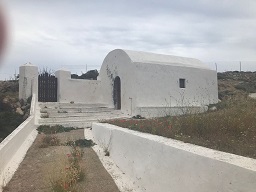 |
 |
 |
 |
 |
 |
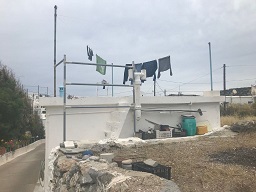 |
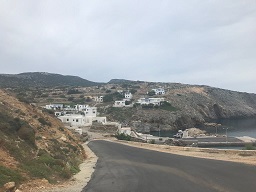 |
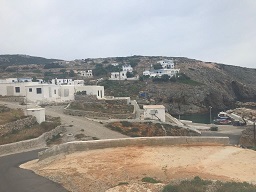 |
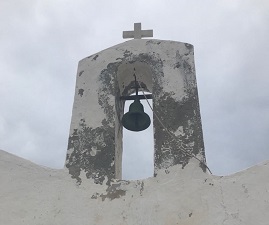 |
|
Antikythera does not get much visitors by ferry because not many people live here and the island is so isolated. Also the fact that there not so many beaches (and certainly no sandy beaches) helps to keep the island quiet. There is no airport, but the island does have a heliport. Only the ferry service between Kissamos (on the island of Crete) and the town of Gythio on the mainland does occasionally stop at Antikythera. So if you want to visit the island good planning is important and if you are going for a hike on the island you have to always bring your own water supply because Antikythera is quite desolate and without many facilities. There is also a direct connection by ferry from the harbour of Piraeus on the mainland to the island of Antikythera, but the trip takes a long time (see the schedules at Lane Lines).
The object has 29 bronze gears and was probably used to carry out complicated astronomical time calculations such as the calculating of eclipses. It is pretty sure that Mechanism of Antikythera also functioned as some kind of calender. It is considered as some kind of ancient analogical computer or mechanical calculator and it brought new speculations to life about the lost island of Atlantis. A beautiful bronze sculpture of a young man that was in the wreck was also moved to Athens. The shipwreck was discovered by coincidence in the year 1900 by sponge divers and the statue was found in 1901 near the wreck of the ship, which laid at 45 meters below the see surface. The statue is 1.94 meters tall and was found in pieces that were later put together. The statue dates from 340 BC. The ship itself dates from 70 to 60 BC and also contained a lot of coins, glass ware and art work, and bronze and marble statues of people, gods and animals. These all date from around the 4th century BC an most marble statues were 1st century BC copies of older works. Roman and Hellenic pottery and utensils on board dated from 75-50 BC. In 1901, after several divers had died or were left paralyzed after decompression sickness, the salvaging of objects from the wreck was stopped. In 1976, the famous French captain Cousteau started diving (with more modern techniques) at the site again and many more objects came to the surface, including parts of the hull of the ship itself.
Close to the fort the remains of a temple that was dedicated to Apollo has been found. A marble statue was found here which is now on display at the Archaeological Museum of Athens. Birdwatchers sometimes also find their way to the island because there are special birds and there is a bird observation point on the island. Many migratory birds make their way to the island and other birds have their breeding ground here. Around 250 different kinds of birds find their way to the island of Antikythera and it is considered the largest birdwatching place in the Mediterranean sea. The new "Wreck of Antikythera" is the Royal Navy ship Nautilus that bumped on breaking rocks west of Antikythera in Januari 1807. Some of the people on the ship were rescued by the inhabitants of Antikythera after spending 6 days on the cold rocks. About half of the crew did not survive, and the others started drinking sea water at a given time. Also cannibalism took place. The crew of the Nautilus described the residents as friendly but very poor, and living in clay huts. Cousteau dived at the site and recovered old cannon balls. Accommodation options in Antikythera island are quite limited. There is no hotel here, there are only some rooms for rent in the harbour of Potamos. If you are lucky enough, you may be able to stay at the room of the municipal guesthouse (currently, the best option to stay on the island). If you are not lucky enough, then expect to stay in a tidy room with shared bathroom. The construction of a small hotel with modern rooms is in progress, just outside the main settlement of Potamos. |
© Hans Huisman, Arianne Geervliet https://www.angelfire.com/super2/greece/ 2018
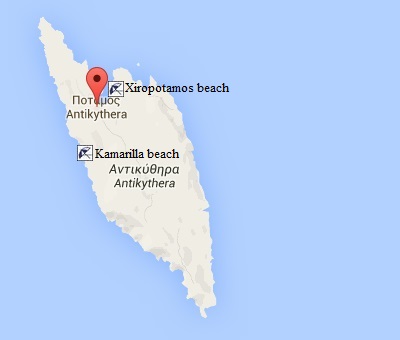
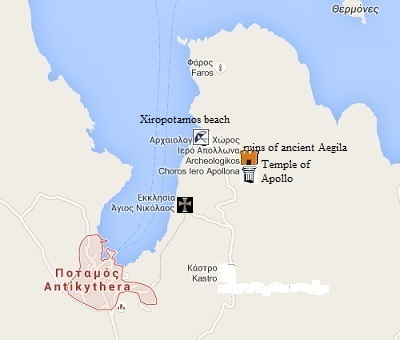 There are many hiking trails on Antikythera that lead to churches and caves. In the village Galaniana is the church of Agios Myronas, the patron saint of the island. More to the south there are several other churches. Near the port Potamos are the remains of ancient Aegila (to the east), that dates from the 4th century BC. If you follow the path from Potamos north turn left at the church of Agios Nikolaos. If you turn left at the junction you arrive at the lighthouse of Antikythera, called Pharos.
A beautiful pebble beach can be found at Xiropotamos. You will pass it on the way to the lighthouse. The distance to the port is about 2 kilometers. There are no facilities at the beach.
There are many hiking trails on Antikythera that lead to churches and caves. In the village Galaniana is the church of Agios Myronas, the patron saint of the island. More to the south there are several other churches. Near the port Potamos are the remains of ancient Aegila (to the east), that dates from the 4th century BC. If you follow the path from Potamos north turn left at the church of Agios Nikolaos. If you turn left at the junction you arrive at the lighthouse of Antikythera, called Pharos.
A beautiful pebble beach can be found at Xiropotamos. You will pass it on the way to the lighthouse. The distance to the port is about 2 kilometers. There are no facilities at the beach.
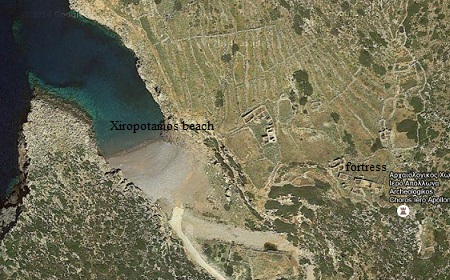 Antikythera is not really known as a tourist attraction, but rather by the discovery of the Antikythera Wreck that had on board the Mechanism of Antikythera, a 2000 year old bronze astronomical clock mechanism that can now be seen in the Archaeological Museum of Athens.
Antikythera is not really known as a tourist attraction, but rather by the discovery of the Antikythera Wreck that had on board the Mechanism of Antikythera, a 2000 year old bronze astronomical clock mechanism that can now be seen in the Archaeological Museum of Athens.
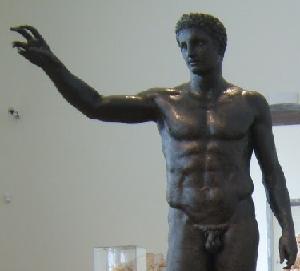 Excavations have shown that Antikythera was already inhabited 3500 years ago. There are traces of the Minoan civilization. The island was a base for Cilician pirates (4th century BC to 67 BC) and was part of the Roman and Venetian empire. The Romans used Antikythera as a place of exile and left their unwanted subjects on the island. In northeast Antikythera are remains of a Cilicis fortress (pirates) and there are old churches and windmills on the island that you can go see.
The pirates lived in the fortress between the 4th and the 1st century BC until they were defeated by the Roman statesman Gnaeus Pompeius Magnus (who married the daughter of Julius Ceasar).
Excavations have shown that Antikythera was already inhabited 3500 years ago. There are traces of the Minoan civilization. The island was a base for Cilician pirates (4th century BC to 67 BC) and was part of the Roman and Venetian empire. The Romans used Antikythera as a place of exile and left their unwanted subjects on the island. In northeast Antikythera are remains of a Cilicis fortress (pirates) and there are old churches and windmills on the island that you can go see.
The pirates lived in the fortress between the 4th and the 1st century BC until they were defeated by the Roman statesman Gnaeus Pompeius Magnus (who married the daughter of Julius Ceasar).